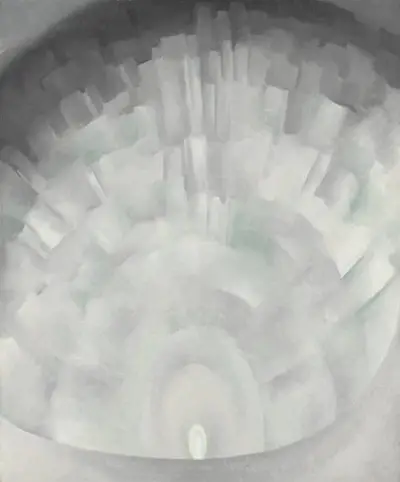In 1928, the above painting was exhibited as a white rose at Alfred Stieglitz's intimate gallery. After lending the art to the Art Institute of Chicago in 1943, she named it ballet skirt or electric light. The newer title describes the artist's dynamic energy that is not present when viewed as a depicted form of a static flower.
Georgia O'Keeffe spent around two years (1914 – 15) in New York, where she was exposed to European culture and modernism through exhibition works. She learned many things from great artists like Georges Braque, Pablo Picasso, and artists at Alfred Stieglitz's gallery, which helped her develop her organic abstraction style. Georgia O'Keeffe started by creating a painting, one of the famous pieces in the 1920s, of an enlarged flower. She later produced a series of works in 1927 that is focused on the white rose.
By asking a series of questions regarding the title, bullet skirt or electric light, its significance will be noticed. The painted fabric's texture, an even layer of bullet tulle, and the full contract of the tinny waist and full skirt are visible with a closer and detailed examination of the art's ballet skirt theme. A slowly emerging light from a small bulb and the color's energy resembling a soft glow are notable considering the whole art's electric light theme.
A Ballet skirt or electric light gives a broad scope in art's world of possibilities. Different individuals can study Georgia O'Keeffe's art and come up with different interpretations and the basis of that art. Other individuals have created the new title to the ballet skirt or electric light to understand Georgia O'Keeffe's arts. The bullet skirt or electric light has helped to see other works in different and new ways.
Many theories come up after interpreting ballet skirt or electric light based on what different art students see. The main aim of the interpretation of this painting is to come up with new information that may add value to the painting's real idea. Georgia O'Keeffe's art is still in the art institute of Chicago, with exhibitions being done locally at a specified time for members and the public.
